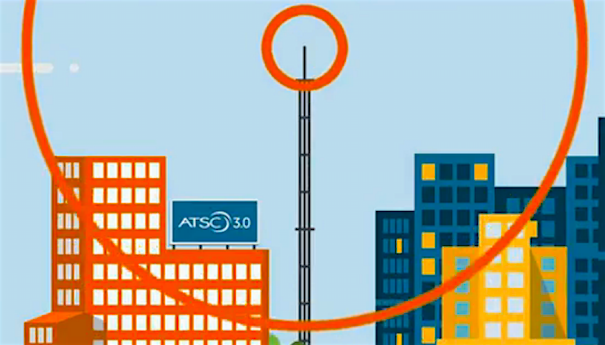ATSC 3.0—‘Best of the Best’ for Broadcasting’s Future
Television viewing is now much more than something that needs just a TV antenna or cable line. Over the past two decades, viewers have enjoyed a plethora of new viewing options, from satellites to streaming and new services that take advantage of better connections that can deliver more choice and control.

The original ATSC Standard was set in 1995, before the availability of DVD players (not to mention Blu-Ray). The iPod wouldn’t even be a reality for another six years. And the DVB-T standard dates from about the same time period. DVB-T2 was a huge improvement, but that 10-year-old technology dates from the era of the iPhone3.
Meanwhile, Moore’s Law has been chugging away each year reducing chip cost by half (or doubling capacity), mobile broadband penetration has exploded and Internet Protocol (IP) has taken over as the de facto language of the communications world.
The broadcast industry’s response to this rapid pace of technological change is the new ATSC 3.0 standard, now literally the best in the world.
Early in its conception, ATSC members determined that in order to achieve true excellence the ATSC 3.0 system would have to be non-backward-compatible with the current ATSC 1.0 system, giving the freedom to design a system with all the newest technical developments.
At the physical layer level, the flexible nature of the “bootstrap” functionality offers unparalleled extensibility for the standard, a unique advantage of ATSC 3.0. As we have learned over and over again, technology just doesn’t stand still. The myriad combinations of modulation, coding and features of the ATSC 3.0 physical layer offer significant improvement over standards a decade old (or even older), and features such as Layered Division Multiplexing bring unheard of opportunities for mobility and hybrid services with tangible spectrum efficiency advantages. ATSC 3.0 is well aligned with other communications technologies that are already in use today, and this reduces the complexity of implementation.
Certainly, better audio and video, more accessibility features, advanced emergency messaging and a high capacity, robust, flexible physical layer are all key elements. In addition to those advancements, one of the key decisions for ATSC 3.0 was that ATSC members wanted the new system to align with internet-based technologies. We envisioned a future of digital terrestrial TV broadcasting as an integral part of a global ecosystem that has embraced IP transport, web browser technologies and app-based services.
The professional video industry's #1 source for news, trends and product and tech information. Sign up below.
ATSC 3.0 IP transport offers several advantages, but perhaps most interesting is that it integrates well with other IP networks, such as the internet and cellular networks. A number of use cases have been envisioned and implemented already.
Of course, content security is paramount for any IP network. ATSC members again turned to existing internet technologies for a solution. In this case Common Encryption (CENC) was chosen. CENC is used by many OTT streaming apps, and so many receive devices already understand CENC. The challenge was to devise a CENC system that works on unconnected devices as well as connected devices. ATSC members and implementers (including new ATSC member Google) have solved this use case and are now implementing it in the Phoenix Model Market and elsewhere.
ATSC members also selected internet technologies for the interactivity system, which is based on technologies that are supported by the major web browsers running on laptops, desktops, tablets, smartphones and smart TVs. This convergence can simplify receiver development and also allow broadcasters to tap into the rich ecosystem of web developers, including the skilled men and women they already employ in the digital departments of local TV stations.
Today, we see the successful deployment of ATSC 3.0 in South Korea with millions of receivers sold. At this year’s NAB Show, broadcasters announced plans to deploy ATSC 3.0 in 61 U.S. TV markets over the next year—a move that will reach more than 70% of the U.S. population. Those introductions coincide with the expected introductions at retail of the first U.S. ATSC 3.0 TV receivers.
It’s an exciting time for Next Gen TV as broadcasters enter the global 21st century data-driven world.
Madeleine Noland is president of the Advanced Television Systems Committee.
For a comprehensive source of TV Technology’s ATSC 3.0 coverage, see ourATSC3 silo.
Madeleine Noland is the president of ATSC-The Broadcast Standards Association

